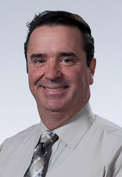
Contact:
University of Arizona College of Medicine - Phoenix 425 North 5th Street, Phoenix, AZ 85004
Co-director, Cardiovascular-Hematology (CVH) Block
Professor, Tenure - Basic Medical Sciences
Co-director, Cardiovascular-Hematology (CVH) Block - Undergraduate Medical Education
Faculty
Basic Medical Sciences; Undergraduate Medical Education
Education
- Postdoctoral Fellowship: Vascular Endocrinology & Hypertension, Wayne State University, 1994
- PhD: Physiology, Wayne State University, School of Medicine, 1992
Publications
- Zein-Hammoud M & Standley PR (2019). Optimized Modeled Myofascial Release Enhances Wound Healing in 3-Dimensional Bioengineered Tendons: Key Roles for Fibroblast Proliferation and Collagen Remodeling. J Manip Physiol Ther. Vol. 42(8), 551-564., 10/2019 - Article, Refereed Journal -
- Zein-Hammoud M & Standley PR (2015). Modeled Osteopathic Manipulative Treatments: A Review of Their in Vitro Effects on Fibroblast Tissue Preparations. J Am Osteopath Assoc. Vol. 115(8), 490-502., 08/2015 - Article, Refereed Journal -
- Cao TV, Hicks MR, Zein-Hammoud M & Standley PR (2015). Duration and magnitude of myofascial release in 3-dimensional bioengineered tendons: effects on wound healing. J Am Osteopath Assoc. Vol. 115(2), 72-82., 02/2015 - Article, Refereed Journal -
- Hicks MR, Cao TV & Standley PR (2014). Biomechanical strain vehicles for fibroblast-directed skeletal myoblast differentiation and myotube functionality in a novel coculture. Am J Physiol Cell Physiol. Vol. 307(8), C671-83., 10/15/2014 - Article, Refereed Journal -
- Standley PR (2014). Towards a Rosetta Stone of manual therapeutic methodology. J Bodyw Mov Ther. Vol. 18(4), 586-7., 10/2014 - Article, Refereed Journal -
More publications from this Faculty on
Research Interests
- Medical Education - Gene Expression - Extracorporeal Manual Medicine
Research Summary
Dr. Standley's laboratory investigates the biomechanical regulation of gene expression as it relates to repetitive motion and modeled manual medicine treatments in bioengineered tissue constructs. Targeted outcomes include effects on wound healing, muscle regeneration and anti-inflammatory cytokine expression and secretion.